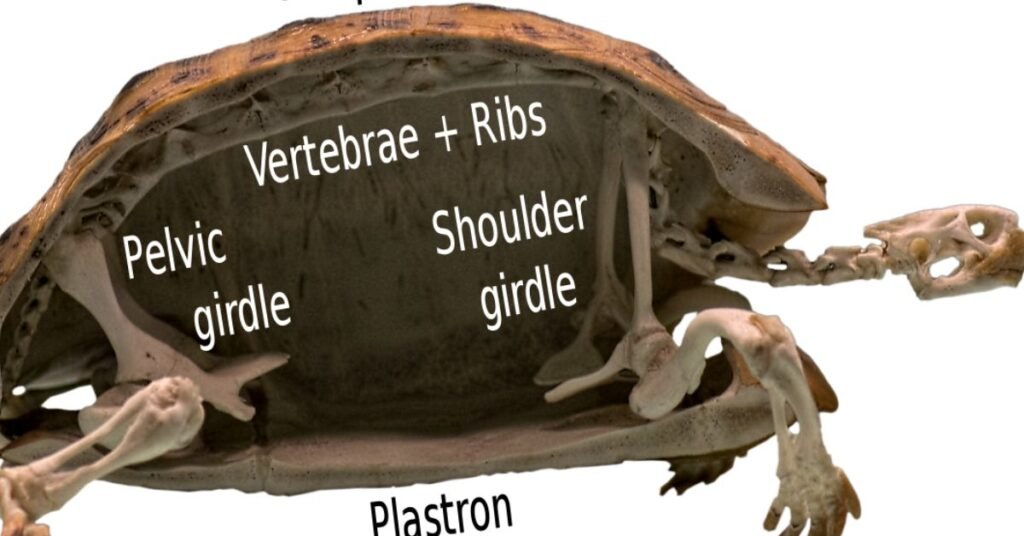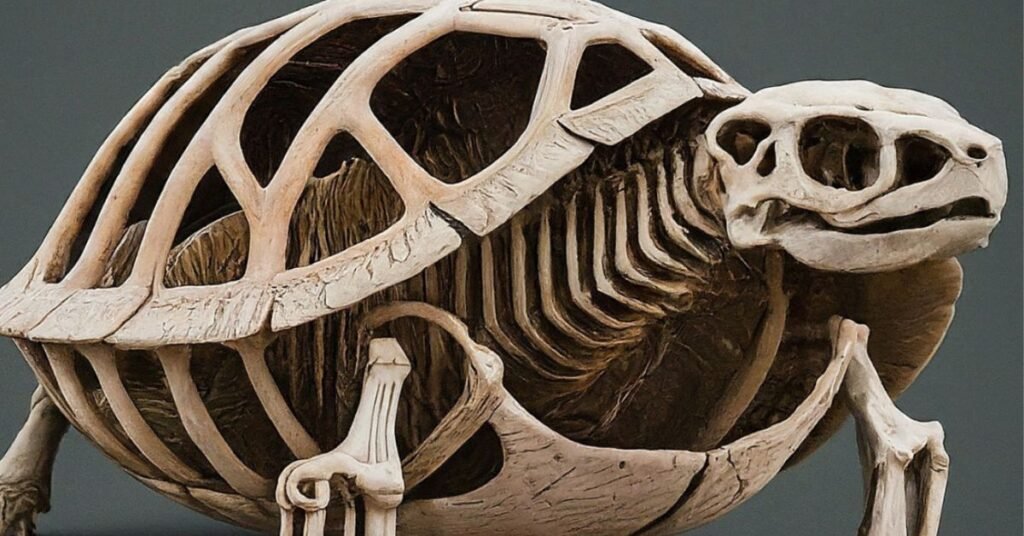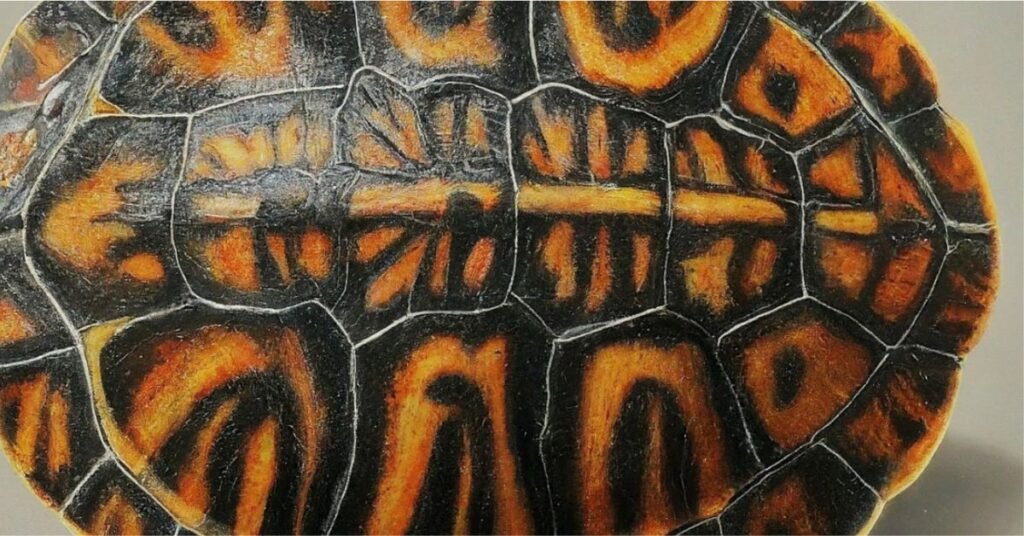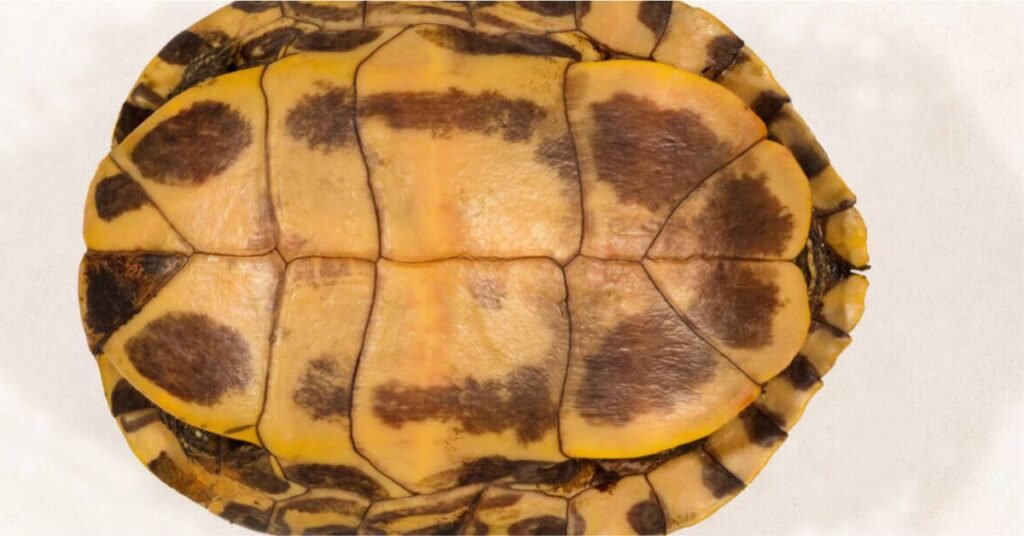Turtles, these reptilian animals, are growing in popularity as pets because of their low maintenance and calming attributes. When we think about turtles, a challenging armored-shell scenario comes into our minds first. Shells are the most recognizable feature of turtles. But are turtles born with shells?
There are many animals; when they are born, how they look changes, and some mature features are added when they grow. Considering this, thinking about this is natural: Are turtles born with shells or not?
While many animals change their body feature, turtles are naturally born with their signature body part shell. In different species, turtles’ shells have different looks, patterns, and shapes, but they have the same base structure. Let’s dig deep into this question: are turtles born with shells? How their shell is made and its function.
Are Turtles Born With Their Shells?

Yes, turtles come into the world with their shells. It’s not something they grow later or can take off. The shell is actually part of their skeleton, just like our bones. When they hatch, it might be a little soft, but it hardens as they get older. So, it means turtles’ shells are made in their embryonic stage even before hatching.
Different Stages of Turtle Shell Growth

Turtles are instantly recognizable for their incredible shells, but these shells aren’t just a hard outer layer they wear. They’re actually a vital part of a turtle’s body and skeleton. Let’s take a look at how a turtle’s shell develops:
Early Development
A turtle’s shell starts forming very early, around 20-30 days after the embryo develops in the egg. This is just a few weeks after fertilization. Because of this early development, turtles have built-in protection from the start of their independent lives outside the egg.
Hatchling Shell
When a baby turtle hatches, it already has a complete shell on its back. However, unlike an adult turtle’s shell, it’s a bit softer and more flexible. It allows the hatchling to maneuver more easily inside the egg and during its first days in the world. Interestingly, this soft shell is mainly made of keratin, the same protein that makes up our hair and nails.
Growing Together
As the turtle grows bigger and stronger, its shell grows right along with it. The bony plates underneath the keratin layer expand and become more robust, strengthening the shell significantly and providing better protection for the turtle’s vital organs inside. The keratin layer itself also thickens over time, adding another layer of defense.
Turtle Shell Anatomy
Now, we know the different stages of turtles’ body or shell development. Let’s take a closer look at the shell layers that make up this authoritarian structure:
Scutes (Outermost Layer)
Think of these as the tough tiles on a roof. They’re made of a protein called keratin, the same stuff that makes up our hair and nails, as we already mentioned above. These hard, scaly plates act like a shield and protect the inner layers from bumps, scratches, and even bites from predators. Also, they keep water loss down for land turtles and provide a smooth surface for swimming aquatic turtles.
Bony Layer
This layer is the strongest base skeleton/foundation. It’s composed of numerous bony plates called osteoderms attached to create a solid and rigid structure. This bony layer gives the shell its strength, allowing it to withstand pressure and impact. Besides keeping everything in place, it connects turtle muscles and organs.
Spongy Layer (Cancellous Bone)
This layer is made up of a network of small, interconnected spaces filled with marrow. Like a shock absorber, this spongy layer gives the shell flexibility. It helps distribute forces from bumps and falls and reduces the risk of fractures and injuries to the turtle’s insides.
Visceral Layer (Innermost Layer)
It’s a thin membrane that lines the inside of the shell and is in direct contact with the turtle’s vital organs. This layer protects the organs from damage and provides a smooth surface for them to move freely.
External Anatomy Of Turtles Shell
The Carapace and Plastron are the two visible external parts of the shell:
Carapace (Upper Shell)

The Carapace is the big, domed part on the turtle’s back. It’s primarily composed of keratin, just like the scutes, but in layered sheets. The younger sheets are deposited over time, along with the older ones, which form the inner core of the Carapace.
Plastron (Lower Shell)

Plastron is the flat underside of the turtle’s body. It’s also made of keratin but with a slightly different structure. The plastron is divided into several sections or plates that allow flexibility and movement.
Hinge-like structures connect these plates. It enables some turtles to retract their heads, limbs, and tails inside the shell for protection.
Scutes are the outer layer of the shell that exits above the Carapace. We discussed them in the above section; they are actually the last external shell layer.
| Shell Part | Description | Example |
| Carapace | Upper shell, formed by the fusion of ribs and vertebrae | Round and domed for land turtles like box turtles, streamlined for water movement in sea turtles like the green sea turtle |
| Plastron | Lower shell, covering the underside of the turtle’s body | Flatter and broader for stability on land in tortoises, offering some flexibility in aquatic turtles like snapping turtles |
| Scutes | Overlapping outer layer of the carapace is made of a tough protein called keratin | Present in most turtles, with a variety of colors and patterns. Leatherback sea turtles are an exception, having a leathery carapace instead of scutes |
What Are The Functions of Shells in Turtles’ Life?
Without a shell, a turtle cannot exist. One of the most significant parts of their body structure. How does the shell contribute to turtle life? Let’s look at them.
Protective shield
Turtle shells are most important for protection. They’re like a super strong shield that keeps the turtle safe from bumps and scratches. They also secure them from predator attacks or bites from hungry animals who might want to make the turtle their lunch. No matter what danger comes their way, the shell offers a strong defense.
Uses For Digging
Did you know that some turtle species, especially those that lived long ago, actually used their shells for digging? They would push themselves down and use their strong legs to dig for food or a cozy place to hide.
Sea Turtle Swimming Power
For turtles that spend a lot of time swimming, their shells help them move smoothly through the water. When a turtle swims, their shell and smooth surface act like a miniature boat, reducing friction. So, shells are crucial for aquatic turtles to move.
Turtle shells also allow powerful swimming strokes. It’s like having built-in flippers. In this way, they can navigate the water quickly, catch dinner, or explore their underwater world.
Sea turtles have a secret weapon for staying afloat—their shell! Bones within the shell help them control their floaty, which is their ability to float in water. This is especially important for swimming long distances in the ocean. Turtles can bobble up and down like little boats because of their unique shells.
Solar Charger
Many turtles have dark-colored shells, which help them absorb heat from the sun. It is essential for keeping them warm, especially in cooler environments. It’s like a built-in solar panel – the shell helps them capture heat from the sun to stay toasty.
Vitamin D Factory
Light can actually pass through a turtle’s shell, and that’s a good thing. This allows them to produce Vitamin D, which is essential for their bones and overall health. It’s like having a natural vitamin factory built right into their shell.
Germ Blocker
The turtle shell acts as a barrier, protecting the turtle’s internal organs from harmful germs and bacteria. The shell acts like a natural armor that keeps them healthy.
Turtle Shell Tidbits
Permanently Attached: Unlike a backpack, a turtle’s shell is permanently fused to its skeleton. Like our skeleton, it cannot be removed.
Turtles can feel shells: Even though their shells seem harsh, turtles can actually feel things through them. This is because tiny nerve endings are present in the bones beneath the shell.
Shell Damage: Minor scratches and cracks on a turtle’s shell can sometimes heal on their own. But if the damage is severe, it’s essential to get help from a veterinarian. Just like us, turtles need medical attention for major injuries.
A Shell of Diversity: Turtle shells come in different shapes, sizes, colors, and patterns. These variations help scientists identify different turtle species and even tell us about their habitat and lifestyle.
Read More: Do Turtles Sleep?
Wrapping Up
So, the answer to this question, “Are turtles born with shells?” is yes. Turtle shells are more than just complex cases. They serve as a shield, a life jacket, a solar panel, and even a vitamin factory—all in one.
In the early stage, the turtle’s shell might be a bit softer, but those tiny shells grow strong alongside the turtle. The turtle’s shell provides the ultimate protection from the get-go.
